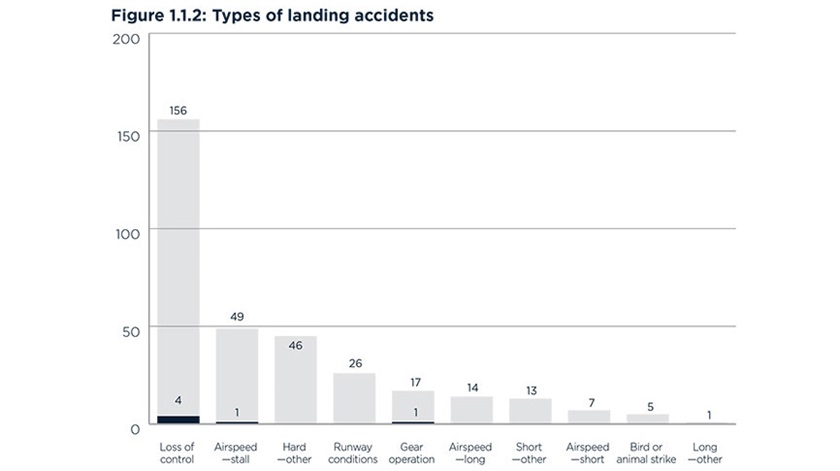Training Tip: Crunch numbers, not airplanes
A popular turn of flight-safety phraseology exhorts you not to become “a statistic.” A newly released report reveals what type of accidents occurred most in 2016.

An aircraft mishap is less likely to have your number if you have studied the subject and know where the risks lie. For any student pilot or other pilot hoping to direct their flight training toward risk management, the Twenty-eighth Joseph T. Nall Report released October 11 by the AOPA Air Safety Institute provides a fact-packed roadmap.
The big picture makes it apparent that accidents related to actions or inactions by pilots remain the largest major category, with landing accidents the largest grouping within pilot-related accidents (noncommercial fixed-wing aircraft). They were also the largest phase-of-flight accident category, and for the year studied (2016), 80.5 percent of landing accidents involved single-engine, fixed-gear aircraft.
The bar graph above crunches landing-accident numbers by accident type. Loss of control runs away with being the most common type, accounting for 46 percent of the total. Airspeed/stall accidents and hard landings were major contributors.
You will be a private pilot someday, so it’s worth noting the large percentage of landing accidents involving those pilots—during daylight visual meteorological conditions. One takeaway for a student pilot is that earning your certificate won’t exempt you from the need to practice; another is to remember that as you move on to bigger or more complex aircraft, don’t cut corners on proficiency training. (A quick checkout right before that long holiday-weekend cross-country is tempting but not recommended as a method of “aircraft familiarization.”)
Student pilots contributed their share of landing mishaps to the total. If you search NTSB accident reports, you will see many examples of common types, helping you train to avoid the time-tested traps.
While you’re doing your part to tamp down aviation’s future accident statistics, another safety project to take on is helping to keep one of the Nall Report’s most encouraging statistics moving in the right direction.
According to the report, weather accidents registered a 10-year low—good news because of their typical lethality and because the majority involved single-engine, fixed-gear airplanes flown by private pilots in (or inadvertently into) day instrument meteorological conditions.

